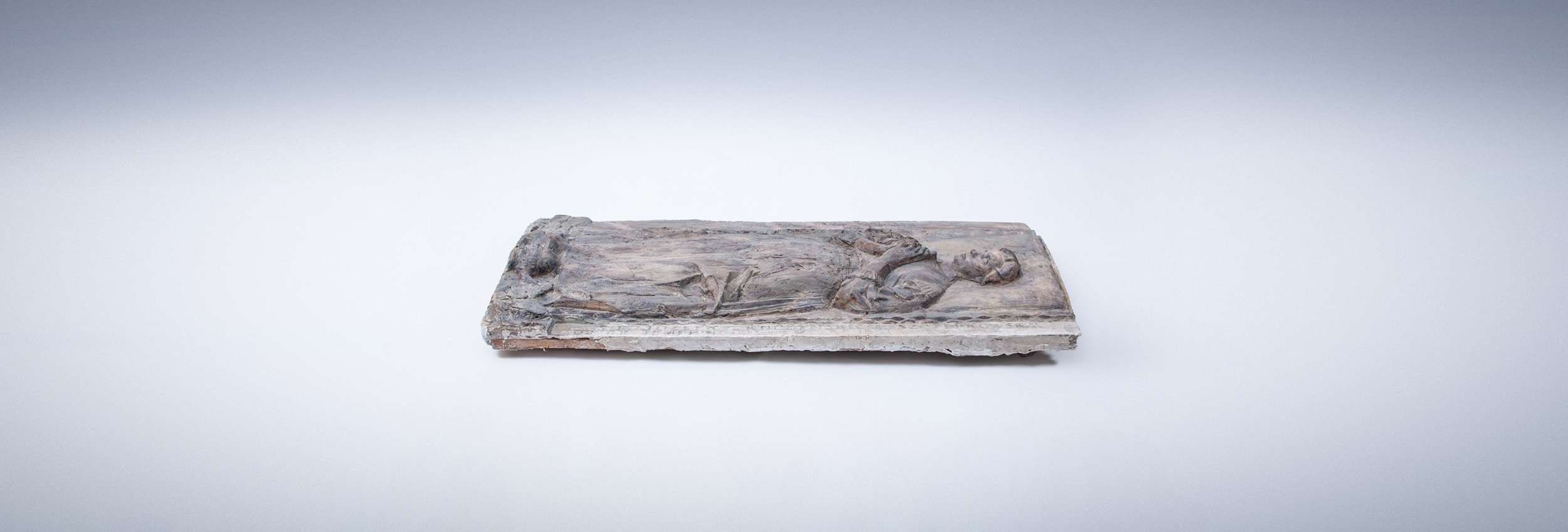
Grave slab of artist’s mother – Józefa Szczepkowska from Kuczyńscy (1840-1891)
The relief shows a female figure in a long dress, with her arms folded together on her chest. On the left, along the vertical edge, there is an inscription “In memory of the ashes of our dear Mother, destroyed during the war in 1915 at the cemetery in Lviv”.
Szczepkowski had a very close relationship with his mother, interrupted by her death in 1891, when the future sculptor was only 13 years old. Szczepkowski mentioned her at the very beginning of his memories contained in a book “Convex and concave”. He mentions that he truly adored her. She was brought up in Lwów during the January Uprising in 1863. As a 13-year-old girl, she was working for an insurgent organization that hid and looked after the insurgents. Jan Kuczyński, artist’s grandfather, was a famous lutenist at the time, as well as an acoustician educated in Italy. He owned the village of Hołosko near Lwów and several tenement houses in the city, so he was quite wealthy.
Szczepkowski owned his prematurely deceased mother whom he had become. The artist's father wished Szczepkowski to receive a strictly technical education, but at the urging of his mother he allowed him to learn to draw and sculpture. The artist's departure to the School of Wood Industry in Zakopane is associated with a difficult life period of the artist, which he remembered painfully and mentioned at the end of his life in the memoirs “Convex and Concave” compiled by Katarzyna Chrudzimska-Uhera. He claims that leaving his family was an extremely difficult experience, especially saying goodbye to his mother, as if he had known he was not going to see her ever again.
The composition is apparently a reference to the 16th-century tombstone of Anna Szydłowiecka from the collegiate church in Opatów.
It is 140 cm long, 60 cm wide and 18 cm deep.